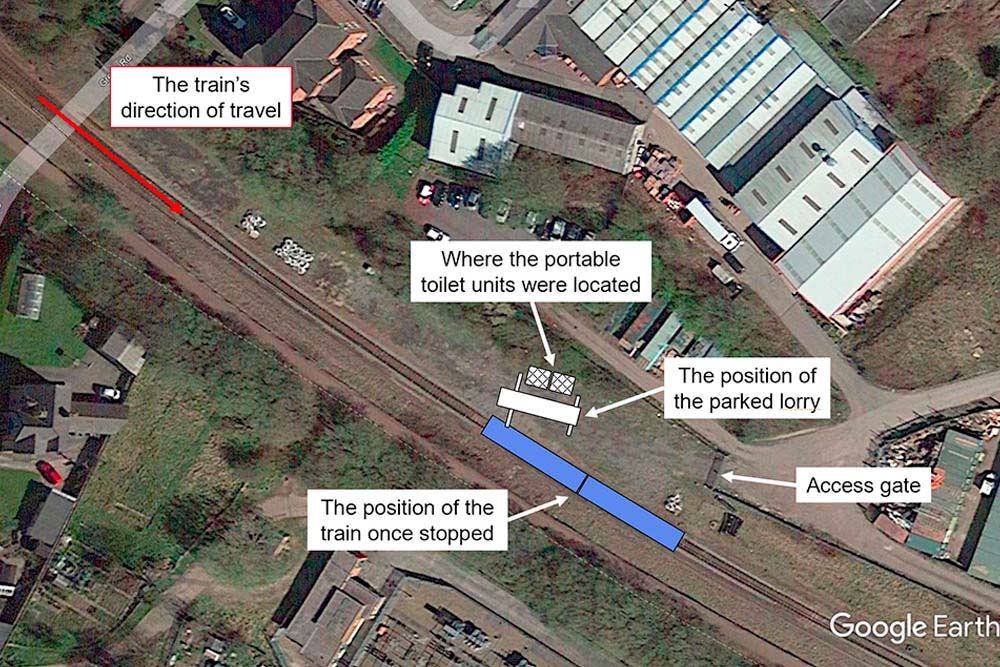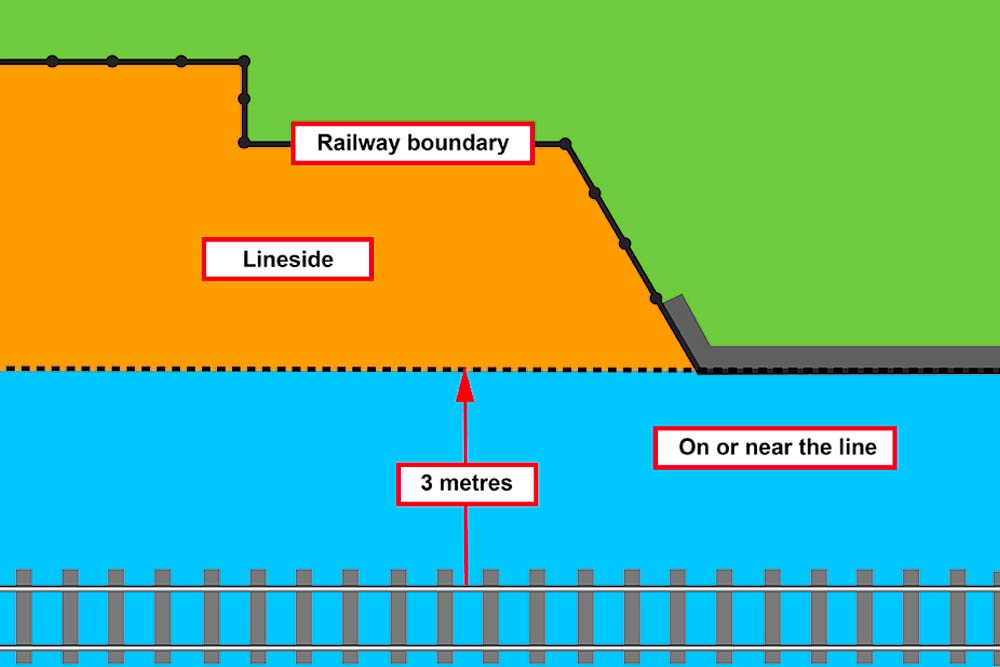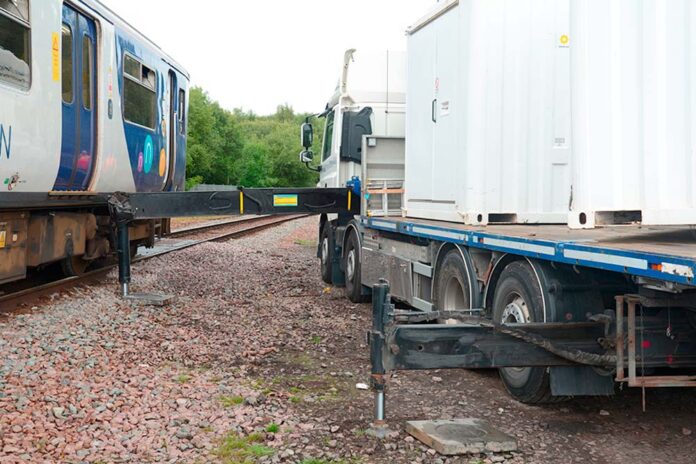A lorry collecting toilets had a collision with a train near Penistone station – causing the RAIB to mention the importance of visitor supervision and management as well as a business needing to understand what’s involved if it works by the railway.
The RAIB investigation says the incident happened on 27 August when a lorry was let trackside to collect portable toilets. The lorry parked near the side of the track and began extending its stabiliser legs.

A train departing the nearby station at 27 mph saw the lorry and sounded the horn to give warning. However the driver of the train did not spot an extended leg was too close to the tracks, as they were not clearly visible. As a result, the driver accelerated until he saw one of the legs and applied the brakes.
Five seconds later, the train had struck the lorry stabiliser leg.
Nobody was hurt, but both the train and the lorry stabiliser leg were damaged.
The lorry had arrived to pick up the toilets following track renewals in the area – the track works being carried out by the Central Rail Systems Alliance (CRSA), which is a consortium of three contractors and Network Rail.
A CRSA member of staff had let the lorry onto the site for the collection. The lorry deployed one leg and was in the course of deploying the second when the train struck.
“The lorry driver did not consider how close the stabiliser leg was to the nearest running line when he positioned the lorry and set it up for the lifting operation,” the report said. “The lorry driver had no experience of working next to an open railway line and thought that no trains were running because he had been let straight into the site by the CRSA member of staff. The lorry driver had not confirmed his understanding that no trains were running.”
The CRSA member had, the report says, only been told to open the gate for the contractor and so, being next to the gate, did not appreciate the proximity of the stabiliser leg to the track.

According to the rules the “position where the lorry had been parked to lift the units meant that it was on or near the line,” the report said, meaning it was within three metres of the nearest running line. “The Rule Book requires a controller of site safety (COSS) to be present before a road vehicle can go on or near the line, but, while the CRSA member of staff held a personal track safety competency (PTS), no one who held the COSS competency was present on this occasion. The Rule Book also states that no part of a road vehicle should be allowed within two metres of any line on which a train might approach. In this case, however, one of the lorry’s stabiliser legs was much closer than two metres and was in fact foul of the nearest running line.
“The contractor who provided the portable toilet units had a generic method statement and lifting plan for collecting the units. The method statement included a hazard analysis section, with a checklist of hazards to consider. It also included a risk assessment for the identified hazards, with each hazard given a risk score (its likelihood multiplied by its severity) and a control measure to reduce the risk. ‘Railways’ was included as a possible entry in the hazard checklist, but it had not been selected for the work on 27 August. This meant that the contractor did not carry out a risk assessment for working near to a railway line. The method statement made no other mention of working near to railways and did not specify what levels of supervision, experience or competence would be required.
“CRSA had adopted a Balfour Beatty procedure for managing visitors to its sites, as Balfour Beatty was one of the contractors in the alliance. The purpose of the procedure was to define and monitor the health and safety controls associated with visitors to CRSA offices, depots and facilities and to ensure that those accessing these sites were not placed at risk. It stated that all visitors must sign in, wear appropriate PPE, be given a visitor’s induction, and always be accompanied by a fully inducted person. The procedure also included a section for visitors required to go on or near the line. It required these visitors to hold the PTS competency or to complete a medical self-assessment and obtain a track visitor permit (TVP). The procedure then required a COSS to validate the visitor’s PTS or TVP, and set up a safe system of work, in accordance with the Rule Book, to meet the needs of the visit. None of this happened when the lorry driver arrived to collect the portable toilet units on 27 August.”







































 0113 2082620
0113 2082620 info@railbusinessdaily.com
info@railbusinessdaily.com 15 Mariner Court, Wakefield WF4 3FL
15 Mariner Court, Wakefield WF4 3FL

